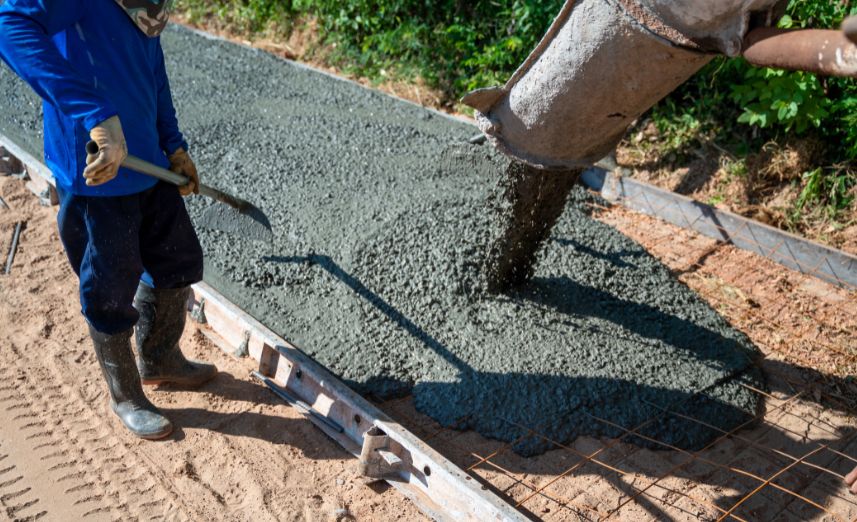Your Step-by-Step Guide to Hiring a Concrete Contractor
Finding a reliable tradesperson can feel daunting, but a structured approach makes the process straightforward and helps protect you from "cowboy builders".
Step 1: Define Your Project Clearly
Before you seek quotes, be as clear as possible about what you want. Measure the area (in metres) and think about the purpose of the concrete (e.g., a base for a 2-tonne log cabin needs to be stronger than a path). The more detail you provide, the more accurate your quotes will be.
Step 2: Post Your Job on ServiceTasker
This is the easiest way to reach multiple local specialists. Write a clear description of your job, including the dimensions, what it's for, and your location (postcode). Vetted tradespeople in your area will then be able to review the job and provide you with a competitive quote.
Step 3: Vet Your Shortlisted Tradespeople
Once you have a few quotes, do your due diligence. On ServiceTasker, you can review profiles and past work. Check if they are members of a trade body like the Federation of Master Builders (FMB). A professional will be happy to show you their Public Liability Insurance certificate.
Step 4: Get Detailed, Written Quotes
Never rely on a verbal price. Ask for a detailed written quotation that breaks down the costs: materials, labour, equipment hire, waste disposal, and whether VAT is included. This prevents unexpected costs from being added later on.
Step 5: Agree on a Contract
For any significant project, a written contract is essential for protecting both you and the contractor. It should outline the scope of work, total cost, payment schedule, and timeline. For larger domestic projects, you could consider using a standard form of contract, such as a JCT "Homeowner Contract".
Key Questions to Ask Potential Concrete Contractors
When you speak to a potential contractor, being prepared with the right questions shows you are a serious customer and helps you gauge their professionalism. It’s a good way to separate the experts from the amateurs.
- Are you and your team fully insured? Please could I see a copy of your Public Liability Insurance?
- Can you provide references from recent customers or show me a portfolio of similar work you have completed locally?
- Who will be on-site carrying out the work – will it be you, your employees, or will you be using sub-contractors?
- Is your quote a fixed price or an estimate? Can you confirm exactly what is included and what is not?
- What is your estimated timeline for the project, from start to finish, and when could you start?
- Could you explain the ground preparation you will carry out and the depth and type of sub-base you plan to use?
- What grade and type of concrete mix do you recommend for this specific job, and why is it the best choice?
- How will you manage the site during the project, and how will rubbish and waste be disposed of?
- Do you offer a guarantee or warranty on your workmanship and the materials used?
- What are your payment terms? (e.g., deposit, staged payments, and final payment on completion after any snagging is resolved).
Common Concrete Finishes Explained
The finish you choose affects both the look and function of your concrete surface. A good contractor will explain the options and recommend the best one for your needs.
- Tamped Finish: A basic, functional finish created by pressing a timber or metal beam across the surface of the wet concrete. It leaves a slightly rough, ridged texture that offers good grip. It's cost-effective and ideal for utility areas.
- Brushed Finish: After the concrete is smoothed, a stiff brush is pulled across the surface to create fine lines. This is one of the most common finishes for driveways and paths as it provides excellent slip resistance.
- Power-Floated Finish (or Trowelled Finish): A mechanical power float is used to create a very smooth, dense, and hard-wearing surface. This is the standard for indoor applications like garage floors, workshops, and polished concrete floors before the polishing stage.
- Exposed Aggregate Finish: A decorative and highly durable finish. The top layer of cement paste is washed off before the concrete fully hardens to reveal the colourful stones (aggregate) within the mix. It has a textured, non-slip surface.
Ready to Start Your Concrete Project?
With a clear understanding of the process, the costs, and the questions to ask, you are now in a strong position to hire the right professional for your job. A well-laid concrete surface is a long-term investment in your property, and finding a skilled contractor is the most important step.
Take the hassle out of your search. Post your job on ServiceTasker today. Simply describe your project, and we’ll connect you with trusted, local concrete contractors who are available to provide you with a no-obligation quote. Compare prices, check credentials, and choose the best tradesperson to turn your plans into a solid reality.

